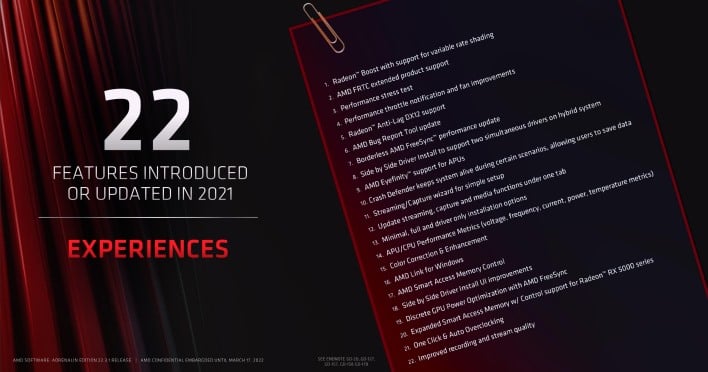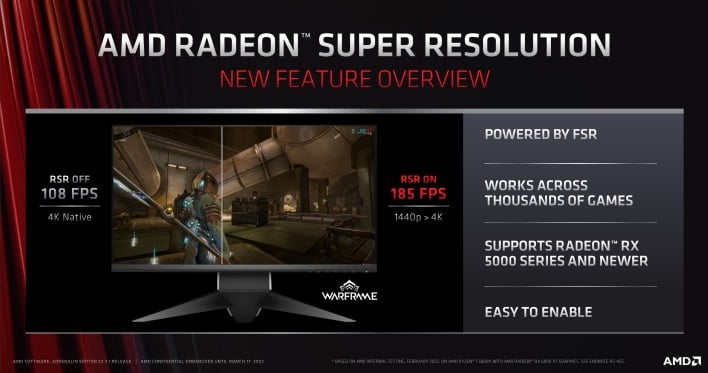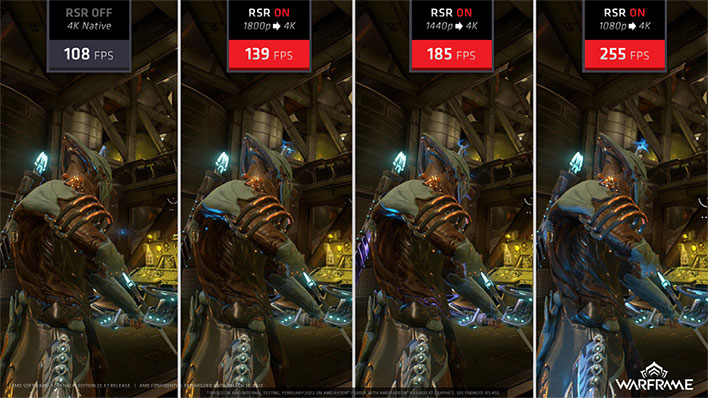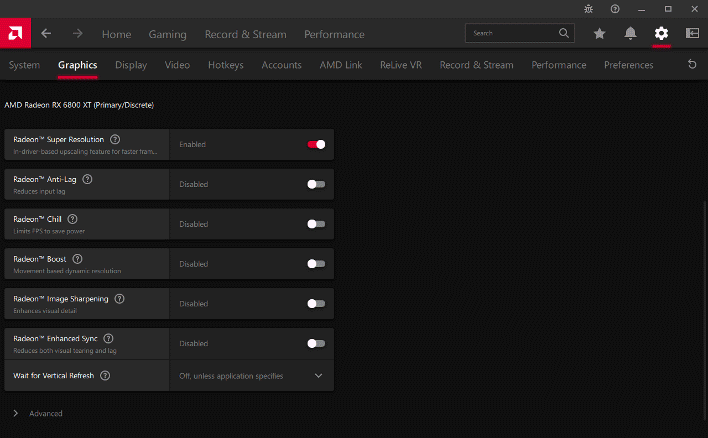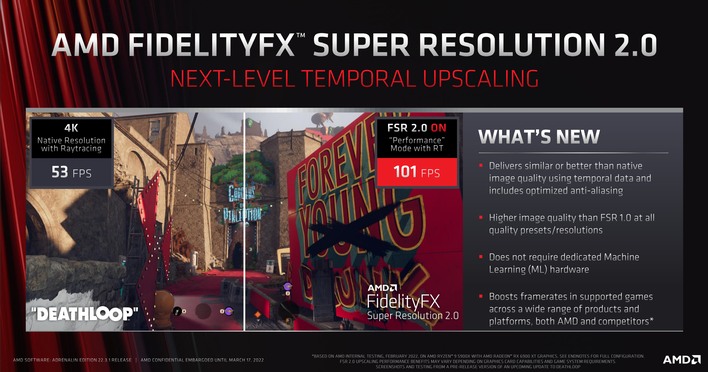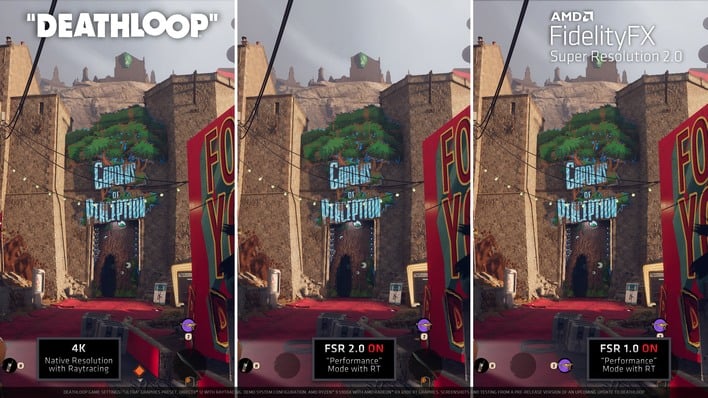AMD Adrenalin Spring Refresh Brings New Upscaling Tech And Key Updates For PC Gamers
It really is a ton of work just to keep a modern Windows graphics driver updated for the latest releases, to say nothing of the "22 new and updated features" in this latest Radeon software release. We're not going to go over all of the changes and updates made to AMD's driver in the last year, but we will highlight a few things that the red team has delivered. We're also going to take a brief look at Radeon Super Resolution, and finally, talk a bit about AMD's upcoming FSR 2.0.
The slide from AMD above lists the 22 new and updated features. It would be easy to downplay AMD's hard work at first glance. But make no mistake, these kinds of small changes can have a big impact on their own, and added up, represent a significant net improvement. Things like Smart Access Memory and power optimizations have a real performance impact, while things like "improved recording and stream quality" are less concrete, but nevertheless make AMD's software package more appealing.
Some other more notable changes include a four-player update to AMD Link, a new "driver feature status" popup when you launch a game, and improvements to the driver updater itself. Now, if you're updating your Radeon driver from inside the Adrenalin software, it will only download the files that have been updated, significantly reducing the download size. That means users don't have to download the full 500+ megabyte package from AMD every time.
AMD Link, for those unfamiliar, is AMD's equivalent to Steam's "Remote Play Together" feature, except that unlike that feature it now supports four players at once. By linking up devices to your Radeon-powered PC over a network or the internet, up to four players can play in a local co-op PC game using video streaming.
While this feature seems pretty cool, in our brief testing we couldn't actually get the AMD Link app to connect even one user, whether using a PC or a mobile device. We pored over AMD's guide and tried multiple versions of the AMD Link software, as well as toggling various settings in the software, but it simply wouldn't hook up. If there's enough interest, we'll come back around to this with a more thorough article another time.
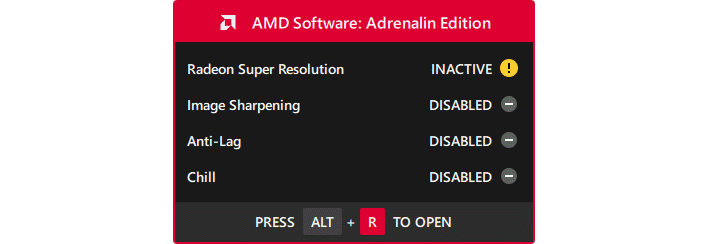
In the latest driver version, the little notification box above pops ups in the corner when you launch a game—as long as you have the Radeon overlay enabled, anyway. As you can see, it informs you of the status of four AMD graphics features. The "inactive" status of Radeon Super Resolution means that it is enabled, but not currently in use.
There are some additional details and an overview of many of the new features in this Radeon Software release, covered in the video above.
AMD Radeon Super Resolution: FSR For Every Game
In the interest of brevity we're going to spoil the party and tell you what Radeon Super Resolution (RSR) is in simple terms: GPU upscaling, now with a form of FidelityFX Super Resolution (FSR). Toggle on RSR, set a full-screen game to a sub-native resolution, and your Radeon will upscale the image using FSR instead of whatever other algorithm (linear upscale?) AMD normally uses. This is essentially similar to NVIDIA's Image Upscaling feature we covered before.
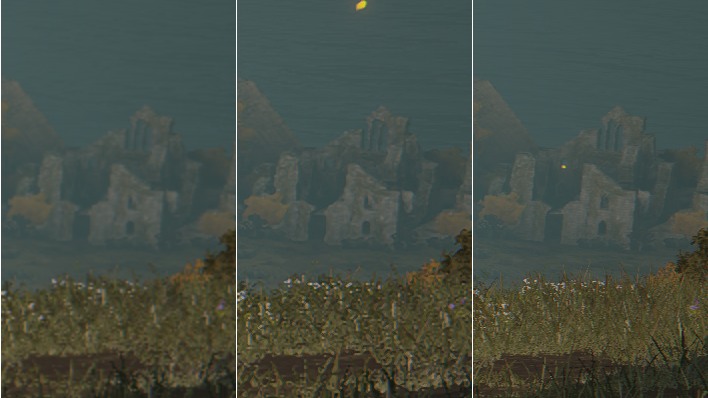
Comparing RSR to Elden Ring's own upscaling, it clearly does give a sharpened and clearer image. Obviously it's inferior to playing in native 4K resolution, and our RX 6800 XT is more than up to the task in Elden Ring, but for folks with slower GPUs, it's a nice alternative. Elden Ring is an incredibly noisy game, though; just check out the grass in the foreground there. In motion, we might prefer the softer, blurrier look of the simple upscale. RSR's sharpening is fairly strong and makes the visual noise from distant foliage even more visible in this game.

Despite that the scene we chose in Ghostrunner is a bit dark, it gives us a great examination of the differences between RSR, FSR, and simple upscaling. Ghostrunner supports FSR 1.0 natively as well as a built-in resolution scaling feature, which gave us the perfect chance to compare head-to-head.
Ghostrunner doesn't have the FSR sharpening slider that some more recent games do, and it's clear that the developer has chosen a more moderate sharpening setting compared to the unmodifiable sharpening strength of Radeon Super Resolution.
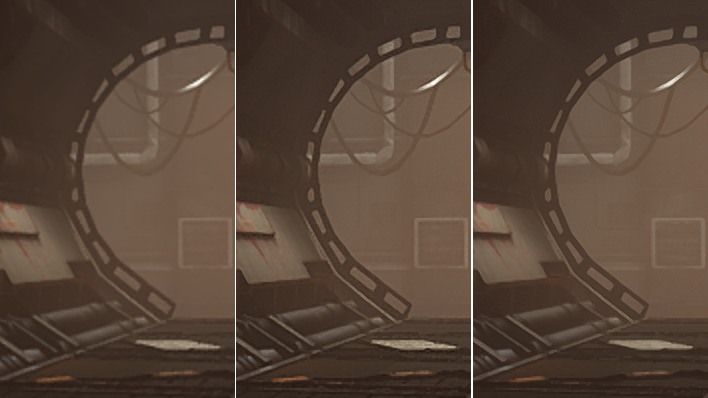
It's interesting to compare the three images (RSR, FSR, and simple scaling) because in some ways RSR resembles the FSR presentation, and in other ways it looks more like the simple upscale. Overall, we'd say it looks roughly comparable to the FSR presentation, but some people may not like the slight oversharpening. AMD's own guidance says to use FSR over RSR, if it is available, and we agree.
If you want to pore over the full-resolution lossless PNG images used for the comparisons above, you can grab them from our Google Drive [344 MB]. The archive includes a few other images we didn't use; they should be named intuitively enough.
Radeon Super Resolution Performance: In A Word, Great
So we spent about two hours running benchmarks on RSR and basically threw them all out because we could not find a statistically significant difference between running RSR, using the same resolution for FSR, or simply running the game natively in the same resolution.
That is to say, that certainly in Ghostrunner, Elden Ring, and Warframe, RSR (and FSR) have functionally zero performance impact compared to running the game in the same resolution without upscaling, at least on our Radeon RX 6800 XT. 4K UHD with FSR "Performance" runs the same as RSR at 1920×1080, which runs the same as 1920×1080 without RSR.
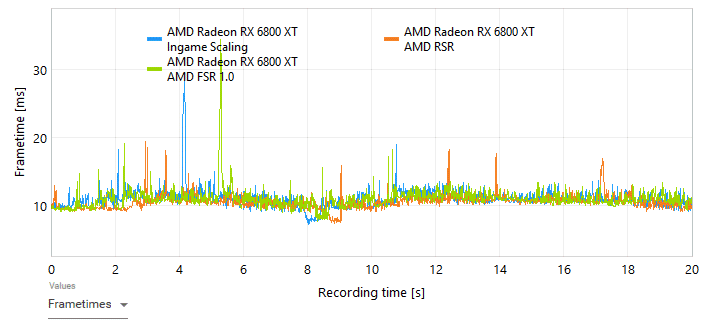
The Caveats Of RSR
That's not to say we don't have any complaints about Radeon Super Resolution. Primarily, it requires you to either change your Windows display resolution or run the game in exclusive full-screen mode, both of which are a hassle for folks with multiple monitors.Trying to task-switch while playing exclusive full-screen games is always a toss-up, but with RSR enabled it seemed almost guaranteed to cause window size issues, application scaling problems, crashes, and even one case of a hard system lock. Just don't ALT+Tab or press the windows key while playing and you'll be fine.
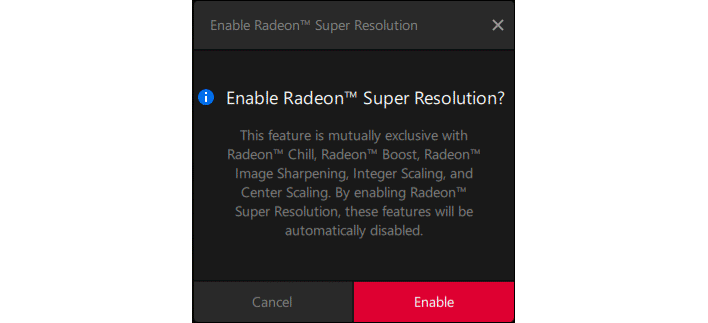
Another minor annoyance is that RSR doesn't work with the majority of AMD's other graphics features. It will only scale to the native resolution of a panel, so you can't use it in conjunction with Virtual Super Resolution. You can't use it alongside Radeon Chill, Boost, or Image Sharpening, either, and enabling it will clobber your display scaling settings, too.
Furthermore, Radeon Super Resolution isn't available on many of the GPUs that could benefit from it the most. Most notably, older Polaris and Vega GPUs—including several integrated parts that AMD is selling as "current" models—can't use RSR. To use RSR you need an RDNA-based GPU, which means Radeon RX 5000 series and up. However, many or perhaps even a majority of those cards are not likely to need RSR, much as our RX 6800 XT doesn't for Elden Ring as we mentioned above.

Introducing FidelityFX Super Resolution 2.0
And now for the moment you've all been waiting for. Yes, indeed; AMD is formally announcing the existence of FidelityFX Super Resolution 2.0. Some while after the release of the original "FSR", AMD started appending a 1.0 to the name, thus christening "AMD FSR 1.0" as the feature can be found in many games now. After that move, it became rather clear that the company would be iterating on the feature eventually.Well, "eventually" isn't now, but instead at some time in Q2 of this year. As we saw a week ago, AMD has a talk scheduled at the Game Developers Conference on March 23rd. We were fairly sure even at that time that AMD would be talking FSR 2.0, but now we have official confirmation from AMD that the "Next-Generation Image Upscaling for Games" talk will in fact be about FSR 2.0.
Unfortunately, aside from the information on the slide above, we really don't have much to say about FSR 2.0. AMD says that, unlike FSR 1.0, it will use "temporal data" to give "higher image quality than FSR 1.0 at all quality presets." In that regard, it sounds similar to DLSS and Intel's XeSS, but unlike those solutions, it does not make use of dedicated AI hardware. (We know, XeSS can be used without it, too.)
AMD was kind enough to give us a few example images, at least. The screenshots are from an in-development build of the game Deathloop with FSR 2.0 support added in. Besides a few triple-image comparisons like the above, AMD thoughtfully provided us with the full-resolution lossless PNG images to make our own judgements. We've cropped and clipped a specific piece of the scene out for you below.
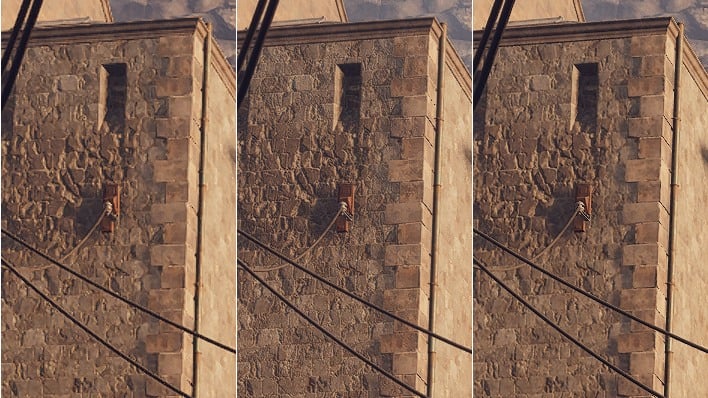
If you look carefully, AMD's claims of "better than native" image quality seem to be reasonable, at least in this example. The FSR 2.0 presentation has smoother edges along geometry, and additional detail on the flat surface. However, it seems to sacrifice some shadow detail compared to the native 4K presentation, and it looks like the FSR 2.0 algorithm is adding a lot of visual noise that isn't there in the native 4K nor the FSR 1.0 images.
It's impossible to make any kind of judgement whatsoever from a single set of images, and that's triply true considering that FSR 2.0 will apparently make use of temporal data. This will drastically alter how it looks in motion, and also could open the door for ugly motion artifacts like those that sometimes plague TAA implementations and competitor NVIDIA's DLSS solution. Naturally, as soon as FSR 2.0 is available, we'll be doing a full comparison against DLSS as well as XeSS, if it's also available at that time.


